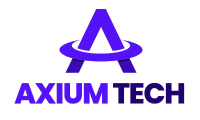That’s why, with a growing need for digital products to be more complex and less time to market, development teams must pull off more with faster delivery, increased stabilization, and support for multichannel engagement all underneath the umbrella of code quality and scalability. This is where the legacy CMS can impede progress. By effectively tying the content to the front-end rendering, headless dependencies complicate velocity and ease. But a headless CMS offers an entirely different approach. Providing a decoupled, API-first methodology means developers get all the resources, flexibility, and autonomy to achieve the fastest and cleanest work without constraints.
Avoid Monolithic Systems
WordPress, Drupal, and other traditional CMS systems were created under the assumption that a website page would need to exist: meaning that the actual construction of content creation would be intertwined with the template/theme/back-end logic of a single page. This intertwining means that developers have no choice but to work within a traditional, aged, and potentially buggy architecture with legacy components that end up reducing development speed. A headless CMS allows developers to avoid this requirement by decoupling the content layer from the presentation layer. Explore Storyblok.com to see how modern, API-first architecture empowers developers to work without the constraints of outdated systems. Developers can use whatever coding language or framework they want to build their applications without the encumbrance of someone else’s slow code or an ancient codebase. The headless options facilitate speedy coding and upkeep with whatever frontend the developers want to build.
Framework-Agnostic Development is Facilitated
Perhaps the coolest aspect of a headless CMS is that it does not rely on any front-end technology. Developers can make a single-page application via React, a static site generated via Next.js, or even mobile applications designed via Flutter. With APIs, developers can access and display content regardless of how the application is formed, never having to worry about how content was created in the first place. This availability of framework-agnostic technology allows teams to leverage the best technology for each use case instead of an all-or-nothing stack. Developer productivity increases as there’s no restriction to working around an inappropriate framework for the best plan.
Better Workflows with Separation of Concerns
A headless CMS solution allows for the separation of concerns where the developers’ and content creators’ roles are better defined. From a developer perspective, they care about application structure, formatting, and intent; adjustments and changes will be made based on logical implications. On the other hand, content creators know what’s best for their text/media creation and metadata. This lack of overlap helps avoid bottlenecked scenarios where two teams sit there waiting for the other to finish their responsibilities. For example, developers won’t hardcode content or be swept away in their image-making as they attempt to play writer each time a change is necessary. At the same time, marketers won’t twiddle their thumbs while waiting for developers to push their content live. This clarity improves velocity and allows each group to do what they do best.
Increased Velocity of Development via API-First Offering
A headless CMS is underpinned by an API-first experience. Every piece of content lives behind RESTful or GraphQL APIs that developers can consume and engage with across as many digital endpoints as they prefer. Predictable, well-documented endpoints mean that developers can build a more modular and repeatable design.

Teams can create components that are reusable, easily integrate third-party applications and services, and orchestrate experiences across technologies without added friction. This programmatic experience with content encourages the iterative development that so many digital tools require today.
Facilitates Component-Based Development and Reuse
Angular, React, Vue, ultimately any front-end framework supports component-based development. The ability for independent modules to render reliable user experiences that can then be reused across pages and projects makes for effective velocity and lower times to market. A headless CMS essentially supports component-based development as it allows developers to develop and deliver content in a flexible, modular manner. Developers will create components that map to expected content models product cards, blog teasers, testimonials, etc and implement them across separate experiences. This ensures not only reduced velocity time but good design/content coherence across the entire application.
Integrates with DevOps and CI/CD Relative Ease
Implementing headless CMS in a CI/CD pipeline works with relative ease. Since the CMS isn’t coupled to the actual front-end implementation, developers needn’t worry about interrupting content workflows when third-party testing/validations occur or automated deployments take place. In addition, a headless CMS has webhooks out of the box to trigger rebuilds or deployments upon content publish functionality typically not available within monolithic CMS options that allows teams to successfully ensure positions of published content without fail and without human prompts. This helps improve velocity, reduce downtime, and enable developers to publish and develop simultaneously.
Give Developers the Ability to Test and Tinker
Since headless solutions are decoupled and built on an API-driven architecture, they enable development teams to play, test and innovate at a quicker pace. For example, a traditional CMS is a monolithic entity that binds the back and front together WordPress is a CMS with a backend overall site structure and theme templates which limits the engagement with the backend; it foresees much less opportunity for experimental development. A Headless, however, enables a clear distinction between content management and content delivery. Therefore, a development team could spin up a version of the headless CMS on the sandbox for prototyping UI/UX to see what’s best, or integrate with newer experimental technology for testing voice activation, augmented reality, IoT, wearables.
This experimental opportunity drives innovative problem-solving since teams can think outside the box without fear of interrupting a production system since copies exist to test and troubleshoot. Customization can be explored with A/B testing that prioritizes personalization for specific, targeted opportunities, new UI overrides can be added temporarily to confirm usability before adjusting for long-term approaches and real-life situations can be triggered to ensure only the best functionality makes it through to final production.
This means that improvement can be a constant course of action as long as teams are aware of the opportunities and have the bandwidth to explore them quickly. Companies can stay on the cutting edge for digital transformation and continually expand their digital presence. Accessibility is everything. Therefore, this consistent experimentation allows for a fresh experience of content.
Multiplatform and Omnichannel Delivery is a Breeze
With content existing everywhere from websites to applications to wearables, developers are tasked with ensuring the same brand message and experience makes it to every touchpoint. A headless CMS makes this easy as it allows teams to access one repository of centralized content and enables delivery to any front end using the APIs that connect the two. Developers can write once and go anywhere, merely adjusting for presentation on each respective front end while relying on one version of content to rule them all. This prevents redundancy, saves developer hours and ensures users have the same experience whether they interact with a brand on its website or via smartwatch.
Reducing Technical Debt as Time Goes On
One of the biggest benefits of being able to use a headless CMS is control something that many monolithic, legacy systems do not provide developers. In a typical CMS system, for example, developers have access to themes predetermined, templates set in stone and minimal custom-development opportunities. Therefore, when teams are reliant on what the CMS can do, it becomes friction-oriented, taking away the flexibility that would otherwise provide a truly custom digital experience.
But with a headless CMS, the opposite occurs. There is an increased level of development control because the headless CMS decouples the content layer from the presentation layer and relies strictly on API access and interaction for any and all pieces of content and assets. That means that developers can create whatever they want with whatever they need React, Vue, Svelte, Next.js whatever applicable language and framework can be leveraged to the best of its ability. Staging environments can be created for geographically driven testing or feature previews; CI/CD can be kept consistently reliable with deployment through custom-written scripts; custom content modeling interfaces can be created to fit editorial needs.
The layers of separation also enable developers to create integrations with internal systems or external data sources and third-party applications. Developers control where functionality appears, how it interacts with applicable APIs, how it renders on specific devices (or does not render when it is obsolete technology), etc. Everything that the CMS layer would ideally accommodate at one point could be generated without wait time or creative compromise, which allows for the development of superb quality at every turn.
Therefore, the effectiveness gained here allows for more innovative development because developers do not have to focus on satisfying functionality concerns for things that would otherwise be CMS-supported. They can use their time and energy for building the applications/projects. Ultimately, this saves time now and during future cycles of the project’s iteration because increased performance integrity in the beginning reduces rework and bug-fixing down the line. When creative and development control is at the highest level, teams become productive and successful, quickly. Eventually, offerings become innovations over time as features as the ability to explore is only limited to what the organization can do itself. A headless CMS is a configurable machine for what content components need to be created.
Conclusion: A Developer-Centric Approach to Content Delivery
Headless CMS solutions herald a new way of rendering digital content and development teams are in one of the best positions to benefit from it. Traditional monolithic or head CMS architectures couple the content creation process with front-end rendering, meaning development teams must rely upon their back-end structure and templated approach to rendering. Headless means that development teams can create their front end in any framework, any language, any tooling, and any aesthetic they choose React, Vue, Angular virtually without limits and they don’t have to worry about content creation getting in the way or forcing a legacy solution to work for their goals.
For example, with an API-first approach, developers can gain access to structured content instantaneously that can be pushed to any device and rendered in any interface. Development timelines can proceed with greater agility and less friction since content won’t be a bottleneck. From web applications to mobile solutions to screen-based applications, a headless CMS is a single source of truth, providing dynamic, consistent content via secure APIs in real-time. When development timelines are faster and more scalable, they better align with the requirements of an omnichannel digital experience.
A headless CMS fosters independence, which encourages collaboration as developers are not responsible for sussing out presentation bugs from content teams or vice versa. Each team can work independently yet collaboratively by utilizing different avenues and pathways. For example, developers can concentrate on architectural integrity and performance optimization while content teams operate in their sandbox. When yet another layer of responsibility is stripped away from the other team, productivity increases, the quality of the project and reliability of what’s being delivered improves exponentially.
Lastly, organizations that embrace DevOps and continuous integration/continuous deployment (CI/CD) and component-based design systems find that a headless CMS fits into this sustainable approach. A headless CMS can be tested and repeated, providing real-time previews and integration into automation workflows. Developers can scale faster, champion continuous deployment easier, onboard new team members without fear of over learning curves while still ensuring that digital experiences can withstand what the future demands in robust, resilient ways.
Therefore, when the quality of development, speed, and flexibility results in digital success, implementing a headless CMS solution is more than convenient; it’s an operationally conducive way to champion high-performing teams to develop their best work without the confines of a siloed approach, allowing for expanded experimentation and accelerated timelines for quality digital solutions that can be delivered easier than ever before.



